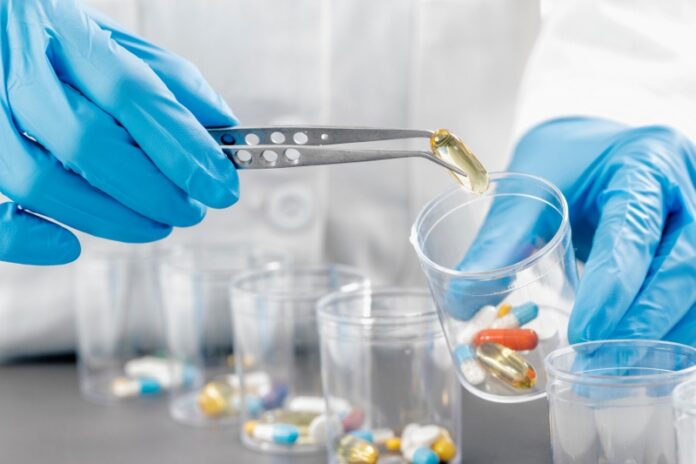When it comes to pharmacy, one could think of a community pharmacy. In particular, single-location independent pharmacies to nationwide chains. Also, one can even conclude that they are located in a hospital.
These are typical examples of pharmacy, but you should know that other types of pharmacy exist. One of those is compounding pharmacy which is another type of pharmacy that can be helpful for specific individuals. A good example is Burt’s compounding pharmacy where a dedicated team of healthcare professionals is well-versed in addressing a wide range of health concerns.
What is a compounding pharmacy?
The traditional role of compounding pharmacy is to develop customized drugs prescribed by doctors for particular patients with needs that can’t be catered to by commercial drugs.
One example of compounding pharmacy is when a person becomes allergic to one of the ingredients in the commercial form of the drug. A compounding pharmacy can develop a customized drug that prevents such a person from becoming allergic while addressing his health issue.
Overall, if you’re a healthcare facility needing compounding drugs, you can visit fagronsterile.com and other reputable compounding pharmacies.
Meanwhile, read on for more information on compounding pharmacy.
Two Types Of Compound Medicines
A compound pharmacy can create two kinds of compounds: sterile and non-sterile. Some pharmacies have a specialty in one type of compounding, while others can offer both compounds.
Sterile compounds consist of dosage forms such as:
- Eye drops
- Injections
- Infusions
- Irrigating Solutions
- IV Admixtures
- Ophthalmic (sprays, solutions, ointments, suspensions)
- Inhalation Solutions (multiple ingredients can be combined to improve effectiveness)
However, sterile compounds have their downside, as there can be a higher risk of being infected or having severe issues if contaminants get into the medication. For that reason, sterile compounds are developed in a controlled environment to reduce such risks.
On the other hand, non-sterile compounds come with lesser risk than sterile compounds. Its dosage form comes in the form of:
- Capsules
- Creams
- Suppositories
- Vaginal and Rectal Suppositories
- Oral Mouthwashes
- Medicated Lollipops
- Specialty Deodorant Sticks
It is crucial to ensure that the prescription compound drugs sent to you are well-mailed.
Overall, seek advice from your health doctor on whether to go for sterile or non-sterile compound medications.

Do You Need Compounding Pharmacy?
Compound medications are necessary for specific individuals. They are helpful for those with sensitivities to personal medications because of particular ingredients. Examples of compound medications are dye-free and gluten-free drugs.
Likewise, many situations call for the need to have compound medications. Compound medicines can be necessary if:
- The prescription is for children.
- The patient has allergies or difficulties with taking pills.
- The pharmacies develop distinctive supplements.
- The cocktail of pills the person needs is potentially dangerous.
- The medicine is off-label.
- There’s a need to adjust the dose as a patient’s needs shift or that the doctor must correspond to the patient’s preference and absorption abilities.
- The drugs are not commercially available.
What Types of Prescriptions Can Be Compounded?
New technologies and innovative methods have resulted in a broader range of compound drugs that pharmaceutical scientists can customize to address one’s medical problems or specific health issues.
Some of the most commonly prescribed compounds are:
- Compounds for adrenal dysfunction and thyroid support
- Plant-based hormones in a variety of dosage forms for bioidentical hormone therapy
- Compounded prescriptions that manage aesthetic and therapeutic concerns
- Medications like topical anti-inflammatories and muscle relaxants that address particular pain in a specific body area without having common side effects
Who Ensures That Compounding Pharmacies Develop Safe Drugs?
Pharmacists who are on the job of compounding medicines must adhere to applicable regulations and standards for compounded preparations. There are government agencies that regulate the pharmacies that compound drugs. These are:
- Food and Drug Administration (FDA): oversees the safety and integrity of the drugs called ‘Active Pharmaceutical Ingredients (API)’ used in compounded preparations.
- State Boards Of Pharmacy: are those who make sure that various compounding pharmacies adhere to state regulations for pharmacy practice.
- Drug Enforcement Administration (DEA): a state agency that inspects any controlled substances used to prepare compound medicines.
- United States Pharmacopeial (USP) Convention: USP is a non-profit organization that issues standards regarding compounding. They define the chemical purity of drugs and also give proper practice standards. They create standards to ensure the identity, strength, quality, and purity of food ingredients, dietary supplements, and medications used in preparing compounds.
Benefits Of Compounding Pharmacy
Compounding pharmacy was the prevailing type of pharmacy before the 1950s. In the 1950s, pharmaceutical companies started the mass-production of medications and drugs in standard sizes, and most pharmacies switched from creating the compounding to distributing usual-sized medicines. At present, there are few compounding pharmacies left, but still, they can offer excellent services.
Some benefits of compounding pharmacy are:
- Patients can enjoy accessibility and satisfaction.
- One can add flavorings to make drops and lozenges more enjoyable to consume.
- Pharmaceutical scientists can mix various prescriptions into a single dosage form for convenience and better medication conformity.
Compounding Pharmacy Market
The compounding pharmacy market worldwide was valued at around USD$8.9 billion in 2020 and may increase by up to USD$21.3 billion in 2031. Likewise, oral medications held a substantial share in the compounding pharmacies’ market of around 43.5% in 2021.
Moreover, the sales of compounding pharmacies rose at a compound annual growth rate (CADR) of about 4.4% from 2016 to 2020. Increasing costs of commercial prescription equivalents, increasing medical dry spells in required medication levels all over the globe, and inadequate access to drugs are expected to boost demand for compounded drugs over the coming years.
Today, essential specialty pharmacies are concentrating on reinforcing their position by working with local manufacturers. They’re going after acquisition to improve their sales. Furthermore, compounding businesses aim to target Asia Pacific, North America, and Europe by adopting partnerships and research and development within the market.
Conclusion
One type of pharmacy that exists is called compounding pharmacy. It’s a type of pharmacy that offers customized drugs to cater to specific patients whose needs aren’t met by the existing commercial medicines. Likewise, these pharmacies can develop either sterile or non-sterile compound medications.
Overall, you can refer to this guide to have more information concerning compounding pharmacy and become aware if you, as a patient, need compound medication.

